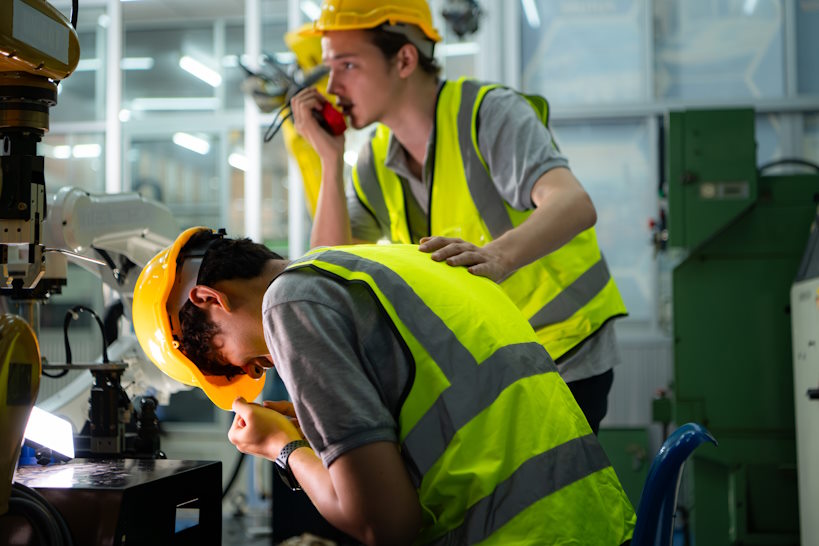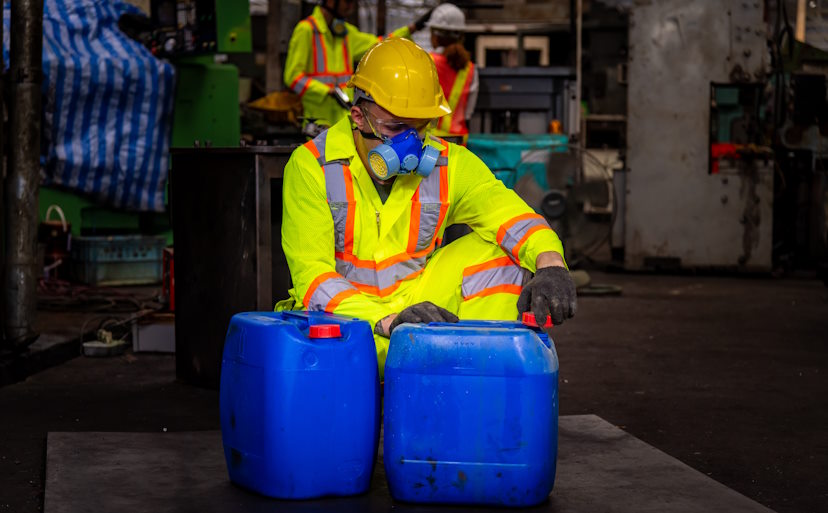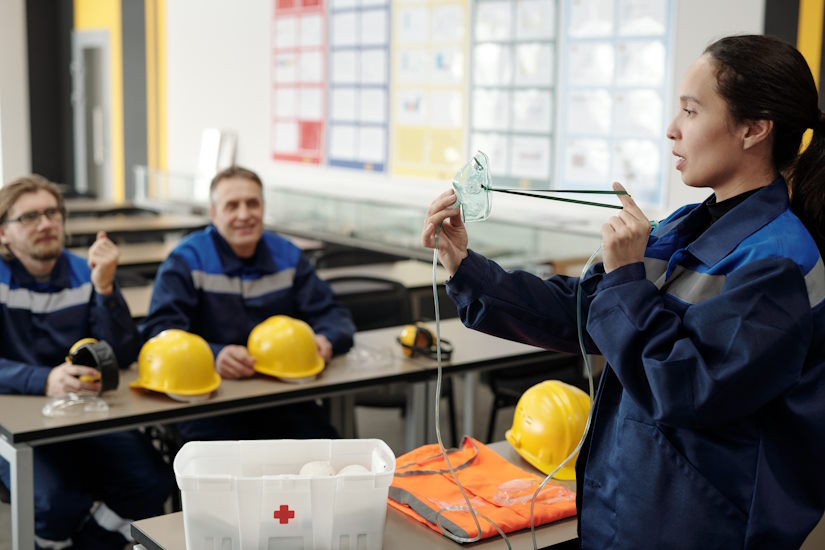Essential safety training tips for manufacturing employees
Written by Ronie Salazar, edited by Jared Worth
The manufacturing sector saw a 23% increase in occupational injuries from 2022 to 2023. Slips, stumbles, falls, and mishaps involving machinery were the top causes of substantial injuries in the manufacturing workplace.
These alarming figures highlight the industry's inherent dangers and underscore the critical need for comprehensive safety training programs. By investing in these programs, companies can significantly reduce workplace injuries and create a safer working environment for their employees.
Why safety training matters
Impact on employee well-being
Safety training is crucial for protecting employees' well-being. Proper training equips workers with the knowledge and skills to identify and avoid potential hazards, reducing the likelihood of injuries and fatalities. When employees feel safe, they are more likely to be engaged, motivated, and productive, which benefits the entire organization.

Financial benefits
Investing in safety training can yield significant financial benefits for companies. Fewer workplace injuries mean fewer workers' compensation claims, which can lead to lower insurance premiums. Additionally, a safer work environment reduces downtime caused by accidents, leading to higher productivity and profitability.
Legal compliance and avoiding fines
Adhering to safety regulations is essential for protecting employees and avoiding legal repercussions. OSHA and other regulatory bodies impose strict guidelines on workplace safety. Proper safety training ensures compliance with these regulations, helping companies avoid hefty fines and legal actions.
Common risks in manufacturing
Machinery-related injuries
Operating heavy machinery is a common aspect of manufacturing, but it comes with significant risks. Without proper training, employees can suffer from severe injuries such as crushes, amputations, and lacerations. Training programs should focus on safe operation procedures, emergency stop functions, and regular maintenance to mitigate these risks.
Exposure to hazardous materials
Hazardous chemicals are used in many manufacturing processes; if mishandled, they can pose serious health concerns. Training on the safe handling, storage, and disposal of hazardous materials is essential to avoid mishaps and long-term health problems.

Ergonomic issues
Repetitive motions, heavy lifting, and prolonged standing or sitting can lead to musculoskeletal disorders. Proper ergonomic training helps employees adopt correct postures and techniques, reducing the risk of injuries and enhancing overall workplace comfort.
Read more: New exoskeleton is revolutionizing work processes
Core safety training programs
General safety orientation
A thorough safety orientation introduces new hires to the company’s safety policies and procedures. This initial training should cover general workplace safety rules, emergency procedures, and the importance of reporting hazards and near-misses.
Personal protective equipment (PPE) training
Personal Protective Equipment (PPE) is essential for protecting employees from hazards. Training should cover the different types of PPE, such as helmets, gloves, goggles, and respirators, and their specific applications in the workplace.

Machinery and equipment safety
Training on the safe operation of machinery is critical. Employees should know each equipment's controls, safety features, and emergency procedures. Regular training updates and hands-on practice help reinforce safe operating habits.
Hazard communication
According to OHSA, Hazard Communication got 3,212 violations last year. Properly labeling and storing hazardous materials are vital in preventing accidental exposures and spills. Employees should be trained on the importance of clear labeling and safe storage practices to minimize risks.
Emergency response training
Basic fire safety and first aid training can be lifesaving. Employees should know how to use fire extinguishers, perform CPR, and administer basic first aid until professional help arrives.

Why a safety policy video is effective
A safety policy video is an engaging and accessible way to deliver consistent safety information to all employees. It captures attention more effectively than written manuals and caters to visual learners. It ensures every employee receives the exact same instructions, reducing the risk of miscommunication and maintaining high safety standards. Visual demonstrations within the video help employees understand and remember safety practices more effectively than text alone.
Steps to create a safety policy video
Planning
Start by identifying the most critical safety policies that need to be communicated. Focus on areas with the highest risk and those that are frequently overlooked.
Create a detailed script that covers all essential points clearly and concisely. Ensure the script is easy to follow and avoid technical jargon that might confuse viewers.
Production
Use clear and concise language: Use straightforward language to ensure the message is easily understood by all employees. Avoid complex terms and explain any necessary technical language. You can also translate videos to make the content accessible to non-native speakers.
Include visual demonstrations and real-life scenarios: Incorporate visual demonstrations and real-life scenarios to illustrate safety practices effectively. This helps employees see the relevance of the training to their daily tasks. Use a video editor to enhance these visuals and ensure they are clear and engaging.

Ensure high-quality audio and visuals: High-quality production ensures that the video is professional and engaging. Clear audio and visuals are essential for effective communication and information retention. Compress videos to maintain high quality while optimizing the file size for easy distribution and playback.
Implementation
Make the video a mandatory part of the onboarding process for all new hires. This ensures that everyone receives the same foundational safety training. Additionally, keep the video up to date to reflect current safety policies and procedures.
Continuous improvement: Encourage employees to provide feedback on safety training programs and suggest improvements. This helps to identify gaps and areas for enhancement. Stay informed about new safety developments and regulations and update training programs accordingly. This ensures that training remains relevant and compliant with current standards.
Ongoing commitment to safety
Safety training is not a one-time event but an ongoing commitment to ensuring the well-being of employees. Manufacturers can create a safer, more productive work environment by implementing and maintaining comprehensive safety training programs.
Manufacturers must prioritize safety training and continuously seek ways to enhance their programs. A proactive approach to safety protects employees and strengthens the organization's overall health. Prioritize safety today to build a better, safer tomorrow.



